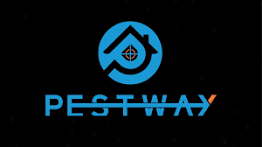
During raccoon child season there is some essential information we ought to all know that can facilitate early detection and humane removal should you find yourself unknowingly hosting a young family of raccoons. Contact Human raccoon removal Troy MI to remove the animals from your property.
Raccoons will mate in the late winter season, with their litters born in April or May. There are some instances where infants come as early as March and as late as June. On rare occasions, if the mom lost her first litter early in the season, a secondary litter will be born, as late as July. But this is not an extremely common event.
So once March hits, it’s important to watch out for any signs raccoons could be trying to break into your attic, garage, shed, or under your deck. Having said all that, the most common location they are found is still the attic.
While raccoons live outdoors, in order to make nests for their infants, they actively look for warm spaces. Your attic is without a doubt the best choice. It’s a raised space which implies security from predators, it has nesting materials easily offered and uses a component of personal privacy.
The silver lining in all this is that this process is seldom subtle. You will notice right away if raccoons are preparing to have their children in your attic.
Recognizing Their Presence
Contents
The greatest difference-maker in this whole process will be how rapidly you become aware of the problem and address it. Raccoons are not discreet animals, weighing in at anywhere in between 10 – 60 pounds, it’s beneficial to handle them right away.
Signs raccoons have actually gained entry to your house:
- Noticeable entry points on the exterior of the structure– typically you will see bent siding, damaged soffits / roof vents, or other obvious indications of animal entry.
- Thumping and rustling– because raccoons are big animals we hear them walking around and preparing their nest.
- Baby’s cries/chirps– similar to their human counterpart, infant raccoons are really vocal during the early days. You will hear them crying routinely throughout the day (and regrettably nights).
- See the mother spending time on the property. She will not roam too far while her kits are young and defenseless.
Potential Damage If Left Unattended

If these pests are left unattended for any duration of time in your attic, the damage can, and will, be ravaging. Contact a wildlife expert immediately. A day or 2 squandered attempting to DIY is all the time they need.
Kinds of damage usually afflicted by raccoons throughout the breeding season:
- Contamination of attic area (urine, feces, nesting, birthing process).
- Damage to the structure– soffit, siding, roof vents, and so on.
- Damaged, ineffective insulation.
- Damage to structural beams, air ducts, electrical, and so on
The costs associated with repairs and remediation of wildlife inhabitation will typically run into the thousands of dollars. It’s in the owner’s best interest to rapidly and humanely force out the unwanted visitor as soon as possible.
How Long Do They Stay?
It takes approximately 3 months for child raccoons to be able to move around on their own. Prior to the 3 months, you’re not likely to see any infant raccoons in your house; they’ll be nestled away in the insulation while their mother goes out to forage.
At 3 months of age, baby raccoons will start to forage on their own, branching out into the attic area and the outdoors. Raccoons will not necessarily vacate the space after the infant raccoon season has ended up.
Another reason you want to avoid having these animals give birth on your property is that the following year, the female children will return to the very same location to have their litter. And each subsequent year that follows the young females will attempt to return. Don’t let the cycle start.
What To Do
Among the really worst ways you can deal with this problem is by sealing the raccoons in the attic. While it will keep them from wandering throughout your house, the mom and babies will starve to death in your attic.
Raccoons mean no harm by living in your attic; the raccoon mom is simply searching for a warm place for her infants. Contact a wildlife removal service right away to deal with the issue. Respectable and humane companies employ procedures that not just ensure the fast and safe removal of the mom raccoon and her children but will also offer a lifetime service warranty for their service. Raccoon removal should only be done by specialists.
Try not to contact a traping business as they might not be the most humane option readily available. There are gentle ways of getting rid of raccoons that allow the animals and their offspring to transfer themselves to another den in the area. Untouched by human hand and free to resume tearing apart our garbages and patrolling our neighborhoods in the evening.
Also Read:
Raccoon Rehabilitation
